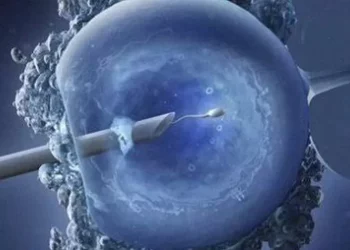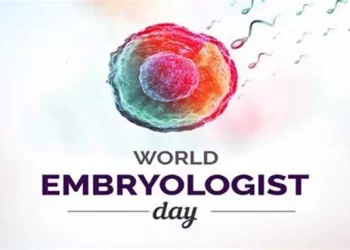Infertility is a common concern for many couples worldwide. Among females, infertility can arise due to various factors, ranging from hormonal imbalances to structural issues within the reproductive system. Understanding the prevalence, causes, and potential treatments is crucial for those facing this challenge. This article aims to provide a comprehensive overview of how common female infertility is, the underlying causes, and the available solutions.
Prevalence of Female Infertility
Female infertility affects a significant portion of the population. It is estimated that about 10-15% of couples in the United States experience infertility, with female factors contributing to approximately one-third of these cases. This translates to millions of women facing difficulties in conceiving at some point in their reproductive years.
Global Statistics
The prevalence of female infertility varies globally. In developed countries, the rates are similar to those in the United States. However, in developing countries, the rates can be higher due to factors such as limited access to healthcare, untreated infections, and cultural practices. For example, in sub-Saharan Africa, the prevalence of infertility is estimated to be as high as 30%, primarily due to untreated sexually transmitted infections (STIs) and postpartum infections.
Age and Infertility
Age is a critical factor in female fertility. Women are born with a finite number of eggs, and this number decreases as they age. Fertility peaks in a woman’s 20s and starts to decline gradually in her early 30s, with a more significant decline after the age of 35. By the age of 40, the chances of natural conception drop to less than 5% per cycle. Thus, age-related infertility is a common issue among women attempting to conceive later in life.
Causes of Female Infertility
Female infertility can be attributed to various factors. These include ovulatory disorders, tubal factors, uterine abnormalities, endometriosis, and lifestyle factors. Understanding these causes is essential for diagnosis and treatment.
Ovulatory Disorders
Ovulatory disorders are the most common cause of female infertility, accounting for about 25% of cases. These disorders occur when there is a problem with the release of eggs from the ovaries. Common ovulatory disorders include:
Polycystic Ovary Syndrome (PCOS): PCOS is a hormonal disorder that affects up to 10% of women of reproductive age. It is characterized by irregular menstrual cycles, excess androgen levels, and polycystic ovaries. Women with PCOS may have infrequent or prolonged menstrual periods, making it difficult to conceive.
Hypothalamic Dysfunction: The hypothalamus is a part of the brain that regulates the release of hormones necessary for ovulation. Stress, significant weight loss, or excessive exercise can disrupt the hypothalamus’s function, leading to irregular ovulation.
Premature Ovarian Insufficiency (POI): POI occurs when the ovaries stop functioning normally before the age of 40. This condition can result from genetic factors, autoimmune disorders, or unknown causes, leading to reduced fertility.
Hyperprolactinemia: Elevated levels of prolactin, a hormone produced by the pituitary gland, can interfere with ovulation. This condition can be caused by medications, thyroid disorders, or pituitary tumors.
Tubal Factors
Tubal factors account for about 25% of female infertility cases. The fallopian tubes are essential for the transport of eggs from the ovaries to the uterus. Blockages or damage to the fallopian tubes can prevent fertilization. Common causes of tubal infertility include:
Pelvic Inflammatory Disease (PID): PID is an infection of the female reproductive organs, often caused by STIs such as chlamydia or gonorrhea. If left untreated, PID can cause scarring and blockages in the fallopian tubes.
Endometriosis: Endometriosis occurs when tissue similar to the lining of the uterus grows outside the uterus. This condition can cause inflammation, scarring, and blockages in the fallopian tubes, affecting fertility.
Previous Surgeries: Surgeries involving the pelvic region, such as appendectomies or surgeries for ectopic pregnancies, can result in scar tissue formation, leading to tubal blockages.
Uterine Abnormalities
Uterine abnormalities can interfere with the implantation of a fertilized egg or the ability to carry a pregnancy to term. These abnormalities can be congenital or acquired. Common uterine abnormalities include:
Fibroids: Fibroids are benign growths in the uterine wall. While they are common and often asymptomatic, large or strategically located fibroids can interfere with fertility by blocking the fallopian tubes or altering the shape of the uterus.
Polyps: Uterine polyps are growths attached to the inner wall of the uterus. These can interfere with implantation and increase the risk of miscarriage.
Congenital Anomalies: Some women are born with structural abnormalities in the uterus, such as a septate uterus, bicornuate uterus, or unicornuate uterus. These anomalies can affect fertility and increase the risk of pregnancy complications.
Endometriosis
Endometriosis is a condition where tissue similar to the uterine lining grows outside the uterus. This tissue can cause inflammation, pain, and scarring, leading to infertility. Endometriosis affects approximately 10% of women of reproductive age and is a significant cause of female infertility.
Lifestyle Factors
Certain lifestyle factors can impact female fertility. These include:
Smoking: Smoking can accelerate the loss of eggs and lead to earlier menopause. It also increases the risk of miscarriage and ectopic pregnancy.
Alcohol Consumption: Excessive alcohol consumption can negatively affect ovulation and hormone levels.
Weight: Both underweight and overweight women may experience irregular menstrual cycles and ovulation problems. Maintaining a healthy weight is crucial for optimal fertility.
Stress: Chronic stress can interfere with the hormonal regulation of ovulation. While occasional stress is unlikely to cause infertility, ongoing high-stress levels may impact fertility.
See Also: What Are Some Possible Causes of Female Infertility?
Diagnosing Female Infertility
Diagnosing female infertility involves a thorough evaluation of both partners. For women, this typically includes a medical history review, physical examination, and various diagnostic tests.
Medical History and Physical Examination
The first step in diagnosing female infertility is a detailed medical history and physical examination. The doctor will inquire about menstrual cycles, sexual history, past pregnancies, and any medical conditions or surgeries. A physical examination may include a pelvic exam to check for abnormalities.
Ovulation Testing
To determine if ovulation is occurring, doctors may recommend:
Ovulation Predictor Kits: These kits detect the surge in luteinizing hormone (LH) that occurs before ovulation.
Basal Body Temperature Charting: Tracking basal body temperature can help identify ovulation by showing a slight increase in temperature after ovulation.
Blood Tests: Blood tests can measure hormone levels, such as follicle-stimulating hormone (FSH), LH, and progesterone, to assess ovulation.
Imaging Tests
Imaging tests can help identify structural abnormalities in the reproductive organs. Common imaging tests include:
Ultrasound: An ultrasound can provide detailed images of the ovaries, fallopian tubes, and uterus. It can detect conditions such as PCOS, fibroids, and polyps.
Hysterosalpingography (HSG): HSG is an X-ray procedure that involves injecting a contrast dye into the uterus and fallopian tubes. This test can identify blockages or abnormalities in the fallopian tubes.
Sonohysterography: This procedure involves injecting saline into the uterus and using ultrasound to create detailed images of the uterine cavity.
Laparoscopy
Laparoscopy is a surgical procedure used to diagnose and treat certain conditions affecting fertility. It involves inserting a thin, lighted tube through a small incision in the abdomen to examine the pelvic organs. Laparoscopy can detect endometriosis, adhesions, and other abnormalities.
Endometrial Biopsy
An endometrial biopsy involves removing a small sample of tissue from the lining of the uterus. This test can evaluate the uterine lining’s ability to support implantation and diagnose conditions such as endometritis.
Treatments for Female Infertility
The treatment of female infertility depends on the underlying cause. Treatment options range from lifestyle changes and medications to surgical interventions and assisted reproductive technologies (ART).
Lifestyle Changes
Making certain lifestyle changes can improve fertility. These changes include:
Healthy Diet: Eating a balanced diet rich in vitamins and minerals can support reproductive health. Foods high in antioxidants, such as fruits and vegetables, may improve egg quality.
Regular Exercise: Moderate exercise can help maintain a healthy weight and reduce stress. However, excessive exercise can negatively impact ovulation.
Stress Management: Techniques such as yoga, meditation, and counseling can help manage stress and improve overall well-being.
Avoiding Smoking and Alcohol: Quitting smoking and limiting alcohol consumption can enhance fertility.
Medications
Several medications can help stimulate ovulation and treat hormonal imbalances. Common medications include:
Clomiphene Citrate: Clomiphene is an oral medication that stimulates ovulation by blocking estrogen receptors in the brain. It is often the first line of treatment for women with ovulatory disorders.
Gonadotropins: These injectable hormones stimulate the ovaries to produce multiple eggs. Gonadotropins are used in women who do not respond to clomiphene or have more severe ovulatory disorders.
Metformin: Metformin is commonly used to treat women with PCOS who have insulin resistance. It can help regulate menstrual cycles and improve ovulation.
Letrozole: Letrozole is an aromatase inhibitor that can induce ovulation in women with PCOS. It is often used as an alternative to clomiphene.
Bromocriptine: This medication is used to treat hyperprolactinemia by reducing prolactin levels and restoring ovulation.
Surgical Interventions
Surgery may be necessary to correct structural abnormalities or remove blockages. Common surgical procedures include:
Laparoscopy: Laparoscopy can remove endometriosis, adhesions, and ovarian cysts. It can also repair damaged fallopian tubes.
Hysteroscopy: This procedure involves inserting a thin, lighted tube through the cervix to examine and treat abnormalities within the uterus, such as polyps or fibroids.
Tubal Surgery: Tubal surgery can repair or unblock damaged fallopian tubes. However, it is less commonly performed due to the success of ART.
Assisted Reproductive Technologies (ART)
ART includes various techniques that assist in achieving pregnancy. Common ART methods include:
Intrauterine Insemination (IUI): IUI involves placing sperm directly into the uterus during ovulation. This procedure can be used in cases of mild male factor infertility, cervical mucus issues, or unexplained infertility.
In Vitro Fertilization (IVF): IVF is a complex procedure that involves stimulating the ovaries to produce multiple eggs, retrieving the eggs, fertilizing them with sperm in a laboratory, and transferring the resulting embryos into the uterus. IVF is used for various infertility causes, including tubal factor infertility, severe male factor infertility, and unexplained infertility.
Intracytoplasmic Sperm Injection (ICSI): ICSI is a specialized form of IVF where a single sperm is injected directly into an egg. This technique is used in cases of severe male factor infertility or previous fertilization failure with standard IVF.
Egg Donation: Egg donation involves using eggs from a donor to achieve pregnancy. This option is suitable for women with POI, genetic disorders, or poor egg quality.
Surrogacy: Surrogacy involves using a gestational carrier to carry the pregnancy. This option is considered for women with uterine abnormalities or severe medical conditions that prevent them from carrying a pregnancy.
Psychological Impact of Female Infertility
Infertility can have a significant emotional and psychological impact on women and couples. The stress of trying to conceive, undergoing treatments, and dealing with societal pressures can lead to feelings of anxiety, depression, and isolation. It is essential to address these emotional challenges and seek support.
Coping Strategies
Counseling: Individual or couples counseling can provide a safe space to discuss emotions, fears, and frustrations. A mental health professional can offer coping strategies and support.
Support Groups: Joining a support group can connect individuals with others experiencing similar challenges. Sharing experiences and advice can provide comfort and encouragement.
Open Communication: Maintaining open communication with a partner is crucial. Discussing feelings, concerns, and expectations can strengthen the relationship and provide mutual support.
Self-Care: Engaging in activities that promote relaxation and well-being, such as hobbies, exercise, and mindfulness, can help reduce stress and improve mental health.
Conclusion
Female infertility is a common issue affecting millions of women worldwide. Understanding the prevalence, causes, and treatments is essential for those facing this challenge. While infertility can be a stressful and emotional journey, advancements in medical technology and various treatment options offer hope to many couples. Early diagnosis and intervention, along with emotional support, can significantly improve the chances of achieving a successful pregnancy. By addressing both the physical and psychological aspects of infertility, women and couples can navigate this complex journey with greater resilience and optimism.
Related Links:



























